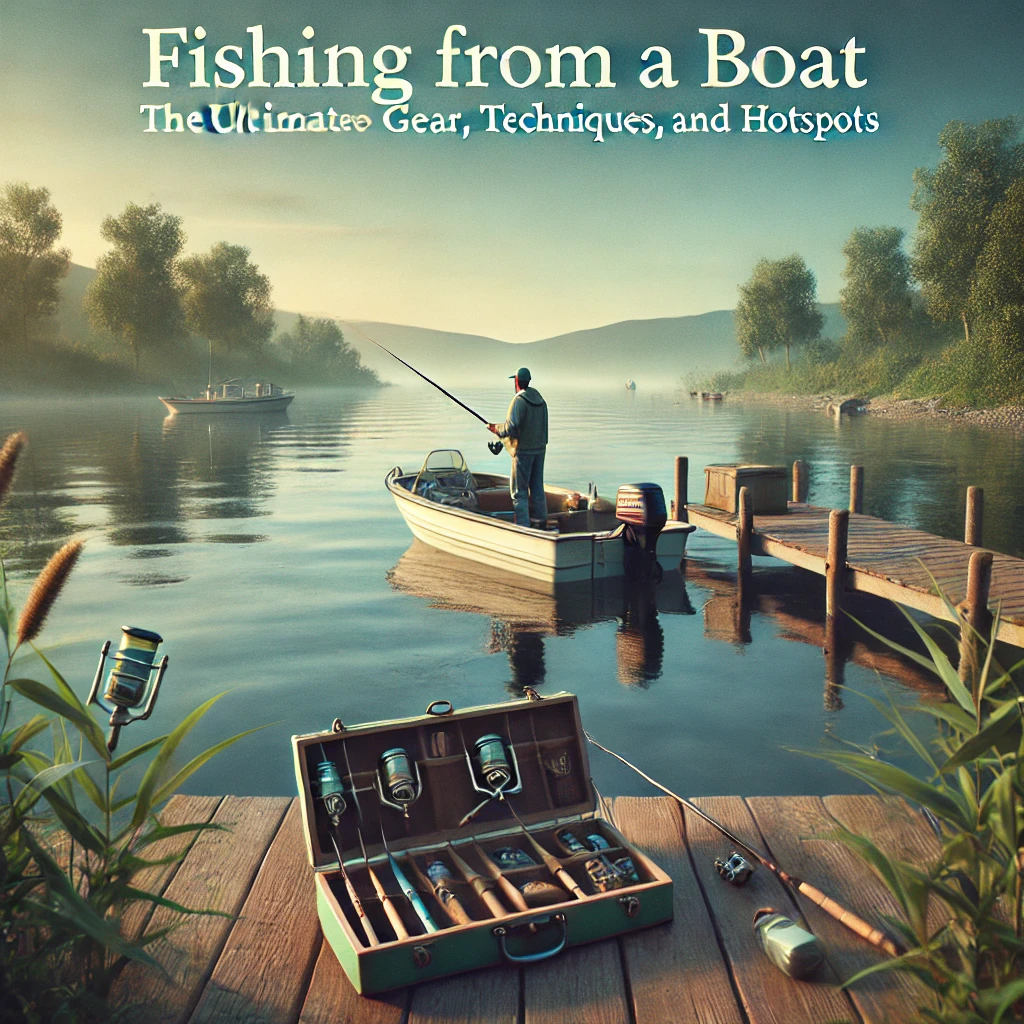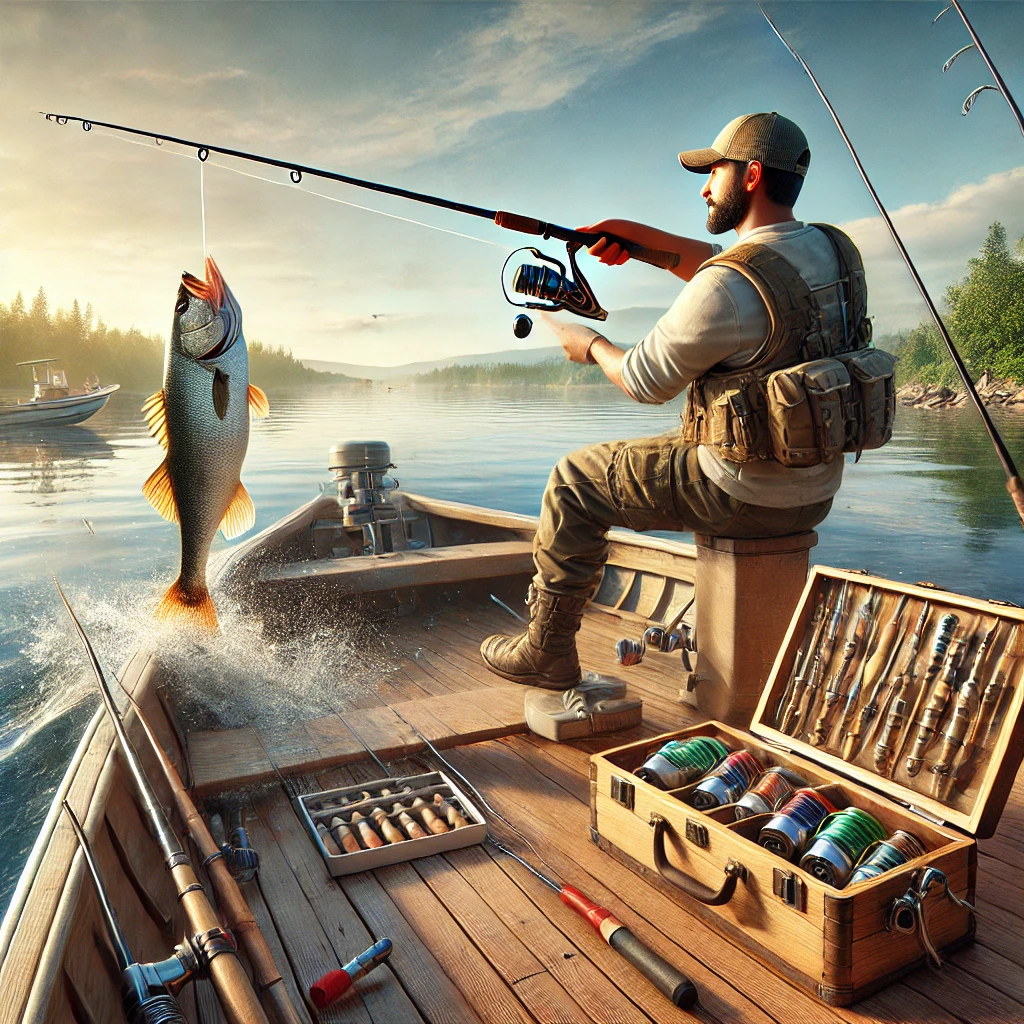Join The Fastest Growing Boating Community! - Sign Up Free Now!
Fishing from a Boat: The Ultimate Guide to Gear, Techniques, and Hotspots


Fishing from a boat opens up a world of opportunity, giving anglers access to deeper waters, larger fish, and the freedom to explore diverse fishing environments. Whether you’re an experienced boater or just starting out, this ultimate guide will walk you through everything you need to know about boat fishing—from the essential gear and techniques to finding the best fishing hotspots.
Essential Gear for Fishing from a Boat
Having the right gear is crucial for a successful boat fishing trip. First and foremost, you’ll need a reliable rod and reel combination that suits the type of fishing you plan to do. For saltwater fishing, look for corrosion-resistant reels and heavy-duty rods, while freshwater anglers can opt for lighter setups. The type of rod you choose will depend on whether you’re trolling, casting, or bottom fishing.
In addition to rods and reels, a good assortment of lures and bait is essential. Artificial lures, like crankbaits and soft plastics, are great for casting and trolling, while live bait such as minnows or squid can be irresistible to a variety of fish. Keep a tackle box stocked with hooks, sinkers, swivels, and extra line—being prepared can make all the difference when you’re out on the water.
Don’t forget safety gear, especially if you’re heading offshore. Make sure your boat is equipped with a life jacket for every passenger, a VHF radio for communication, and a first aid kit for emergencies. A fish finder or sonar system is another valuable tool that can help you locate fish beneath the surface, saving you time and improving your chances of a successful catch.
Techniques for Successful Boat Fishing
Fishing from a boat opens up a wide range of techniques that aren’t always possible from the shore. One of the most common techniques is trolling, where you slowly move the boat through the water while dragging one or more lines behind it. This method covers more ground and is great for catching predatory fish like tuna, wahoo, or salmon. Adjust your speed depending on the species you’re targeting, and experiment with different lure depths using downriggers or planer boards.
For those who prefer a more hands-on approach, casting while anchored or drifting is another effective technique. When casting from a boat, you can position yourself over structure or submerged reefs where fish often congregate. Casting toward drop-offs or into schools of baitfish can lead to exciting bites from larger predators. Vary your retrieval speed to mimic natural movements, as some fish prefer a faster chase while others strike at slower, more deliberate movements.
Bottom fishing is another popular method, especially when targeting species like snapper, grouper, or catfish. For this technique, you’ll need heavy weights and a strong rod to hold your bait at the bottom. Anchoring the boat over rocky outcrops, reefs, or wrecks can yield excellent results, as these structures attract a wide variety of fish.
No matter the technique, patience is key. Pay attention to the water temperature, currents, and weather patterns, as fish are more likely to be active under certain conditions. Don’t be afraid to switch techniques or relocate if you aren’t getting any bites.

Finding the Best Fishing Hotspots
The beauty of fishing from a boat is the ability to reach areas that are otherwise inaccessible, giving you an advantage over shore anglers. Knowing where to fish, however, is just as important as having the right gear or technique. Some of the best fishing spots can be found in areas with plenty of structure or natural features that attract fish.
In saltwater environments, look for reefs, wrecks, and rock formations. These areas act as habitats for smaller fish, which in turn attract larger predators. Estuaries and inlets are also prime spots for fishing, as these brackish waters serve as breeding grounds for various species, making them a hotbed of activity, especially during tide changes.
For freshwater fishing, lakes and reservoirs often have underwater structures like submerged trees, rocks, and drop-offs where fish like to hide. In rivers, focus on deeper pools, eddies, or areas just downstream from rapids, where fish wait to ambush prey. Larger lakes may have fish congregating around underwater humps or weed beds.
One of the best ways to locate a fishing hotspot is to use a fish finder or depth sounder. These devices can give you a detailed view of what’s beneath the surface, showing the depth, water temperature, and fish activity in real time. Local knowledge is also invaluable—talking to fellow boaters or visiting bait shops can lead to insider tips on where the fish are biting.
Timing also plays a big role in finding the best hotspots. Early morning and late afternoon are often prime times for fishing, as the lower light levels encourage fish to feed more actively. Tide cycles and moon phases can also impact fishing success, particularly in saltwater environments where strong tidal currents bring nutrient-rich waters that attract schools of baitfish.
Final Thoughts on Boat Fishing Success
Fishing from a boat offers anglers an incredible opportunity to explore new waters, test different techniques, and target a wide variety of species. Whether you’re chasing bass in a freshwater lake or trolling for marlin in the open ocean, having the right gear, understanding the techniques, and knowing the best hotspots will help you make the most of your time on the water.
Every successful fishing trip starts with preparation. Before you head out, ensure your gear is ready, your boat is well-maintained, and you’ve done some research on where the fish are likely to be. With the freedom and versatility that comes with boat fishing, the possibilities are endless—get out there and enjoy the adventure!
Keywords: boat fishing guide, fishing techniques, boat fishing gear, trolling for fish, casting from a boat, fishing hotspots, saltwater fishing tips, freshwater fishing techniques, fish finder, bottom fishing from a boat, fishing safety gear, offshore fishing
Comments (0)
Please log in to add a comment.